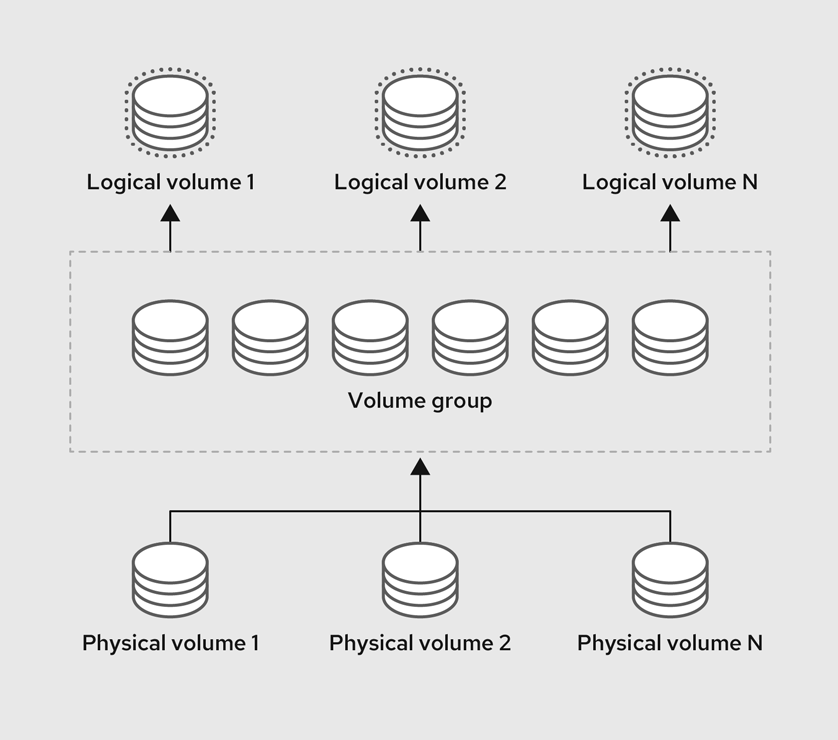Chapter 1. Overview of logical volume management
Logical Volume Manager (LVM) creates a layer of abstraction over physical storage, which helps you to create logical storage volumes. This offers more flexibility compared to direct physical storage usage.
In addition, the hardware storage configuration is hidden from the software so you can resize and move it without stopping applications or unmounting file systems. This can reduce operational costs.
1.1. LVM architecture
LVM creates a layer of abstraction over physical storage, which helps you to create logical storage volumes. This offers more flexibility compared to direct physical storage usage.
The following are the components of LVM:
- Physical volume
- A physical volume (PV) is a partition or whole disk designated for LVM use.
- Volume group
- A volume group (VG) is a collection of physical volumes (PVs), which creates a pool of disk space out of which you can allocate logical volumes.
- Logical volume
- A logical volume represents a usable storage device.
The following diagram illustrates the components of LVM:
Figure 1.1. LVM logical volume components
1.2. Advantages of LVM
Logical Volume Manager (LVM) provides a flexible layer of abstraction over physical storage that enables dynamic storage management. LVM allows you to resize, move, and manage storage without downtime while providing advanced features like snapshots and striping.
Logical volumes provide the following advantages over using physical storage directly:
- Flexible capacity
- When using logical volumes, you can aggregate devices and partitions into a single logical volume. With this functionality, file systems can extend across multiple devices as though they were a single, large one.
- Convenient device naming
- Logical storage volumes can be managed with user-defined and custom names.
- Resizeable storage volumes
- You can extend logical volumes or reduce logical volumes in size with simple software commands, without reformatting and repartitioning the underlying devices.
- Online data relocation
To deploy newer, faster, or more resilient storage subsystems, you can move data while your system is active using the
pvmovecommand. Data can be rearranged on disks while the disks are in use. For example, you can empty a hot-swappable disk before removing it.For more information on how to migrate the data, see the
pvmove(8)man page on your system.- Striped Volumes
- You can create a logical volume that stripes data across two or more devices. This can increase throughput.
- RAID volumes
- Logical volumes provide a convenient way to configure RAID for your data. This delivers protection against device failure and improves performance.
- Volume snapshots
- You can take snapshots, which is a point-in-time copy of logical volumes for consistent backups or to test the effect of changes without affecting the real data.
- Thin volumes
- Logical volumes can be thin-provisioned. This allows you to create logical volumes that are larger than the available physical space.
- Caching
- Caching uses fast devices, like SSDs, to cache data from logical volumes, boosting performance.
